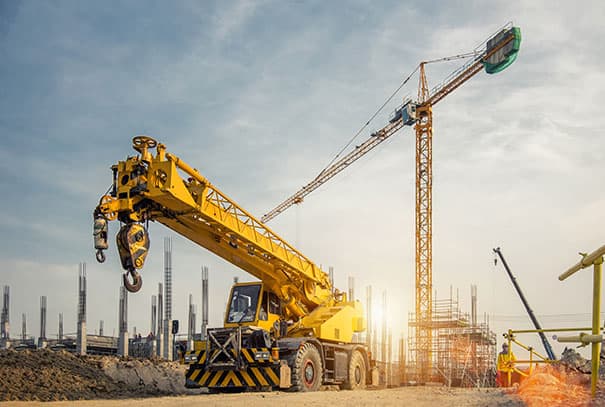
Increased activity in the construction market brings with it the demand for additional plant and equipment. Whilst secondhand plant or equipment is often a cost effective solution, and the genuine articles are not sub-standard, purchasing ‘used’ equipment runs the risk of it being potentially counterfeit equipment.
This means that a company could be unwittingly at risk of a serious health and safety incident, not to mention the financial implications.
In October 2016 Tadano issued an announcement via their website that “a number of counterfeit Tadano products have been appearing on the market worldwide1 .
As these imitation machines have not met Tadano’s quality and safety standards, there is concern that they may consequently lead to structural defects or operational malfunctions, which could result in serious accidents.”
In 2015 Terex Cranes also reported that counterfeit cranes, originating from South Korea, were being sold to UK firms under the Terex/Demag brand. They highlighted how the cranes were built from different parts and lacked essential safety component2.
Financial hit!
With the cost of plant and equipment being a large layout for a construction business, even second hand, many such items are often financed. Once the counterfeit plant or machinery is identified as such, it is likely to be deactivated, but although you no longer have use of the machine, you would still be required to continue repayments on a redundant piece of machinery, which can have serious financial implications on even the strongest business.
Insurance Implications
The confiscation of a counterfeit item is unlikely to be covered by an insurance policy. Even if the item was damaged or stolen, the settlement of the claim can be reduced as payment would be made on the diminished value of the item.
There is also a further consideration in terms of liability claims. If a claimant can demonstrate that the item did not meet the relevant health and safety regulations, or their injury was either caused by or exacerbated by a lack of the expected safety features, this could have a big impact on the value of the claim.
Prior to purchase we would strongly recommend that you take steps to satisfy yourself that the item you are looking to buy is all that it seems. At the very least:
- Arrange a thorough inspection of the crane by a qualified engineer before purchasing.
- Ask the seller for the last inspection report
- Check the provenance with the manufacturer
- Is the seller familiar to you and do they have a good reputation. Make enquiries of their other customers, and ask for recommendations.
- Remember – if it looks too good to be true, it probably is.
Sources:
- https://www.tadano.com October 2016
- https://www.terex.com March 2015

